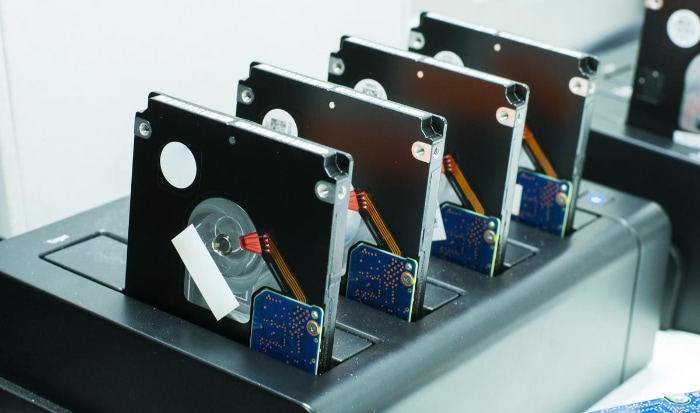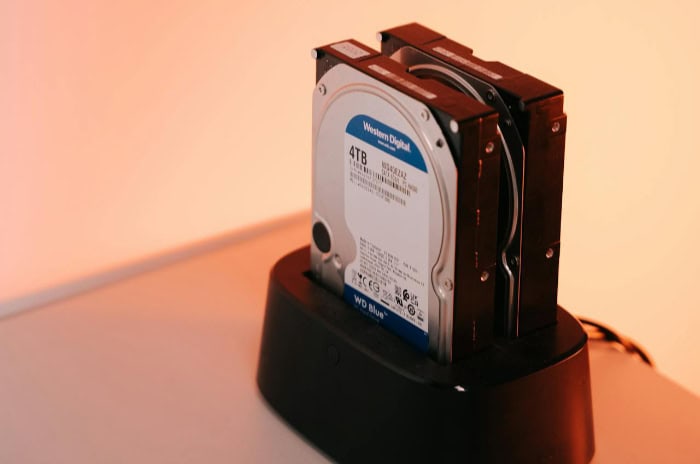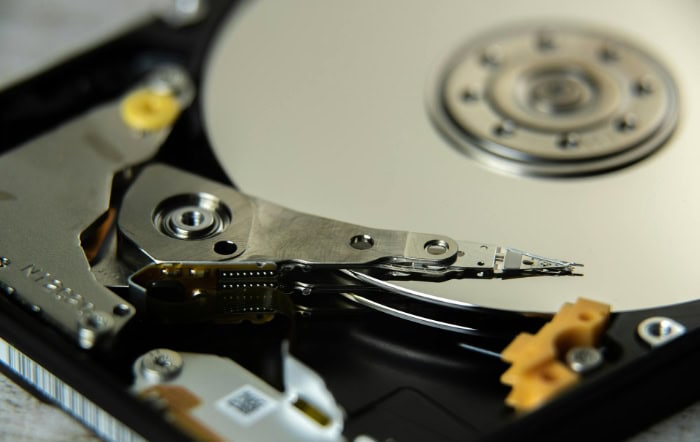What Is Disk Cloning? Everything You Need to Know

Upgrading your computer’s storage from a spinning hard drive to a solid-state drive promises a massive speed boost, but the thought of reinstalling your operating system and all your applications from scratch is dreadful. A sudden drive failure can feel like a digital apocalypse, threatening hours of work and personal data.
Disk cloning offers a powerful solution. It creates a perfect, bit-for-bit duplicate of your entire drive, including the OS, programs, and all your files.
This replica is immediately bootable, allowing you to swap in a new drive and get back to work in minutes, not days.
The Mechanics of Disk Cloning
Disk cloning is a process that creates a precise, one-to-one copy of a computer’s storage drive. Unlike simply copying files from one drive to another, cloning duplicates the entire structure and contents, resulting in a new drive that is a functional twin of the original.
This method is fundamental for seamless system migrations and rapid disaster recovery, as it produces a fully operational and bootable replacement.
Complete System Replication
A clone is a drive-level copy that preserves not just your personal files and applications, but also the critical background components that allow a computer to function. The process duplicates the partitions that organize the drive, the file systems that manage data storage, and the master boot record that contains instructions for starting the operating system.
Every piece of metadata is copied, ensuring the new drive behaves identically to the source.
Cloning Methodologies
Two primary methods are used to create a clone, each with distinct advantages.
- Sector-by-Sector Cloning: This approach performs a literal bit-for-bit copy of the entire source drive, including both used and unused space. It guarantees an exact replica, which is crucial for certain forensic and data recovery scenarios. The main trade-off is that it requires a destination drive of equal or greater size and can be time-consuming.
- Intelligent Cloning: A more common and efficient method is data-aware cloning, which analyzes the source drive and copies only the blocks containing data. This process is significantly faster and offers the flexibility to clone a larger drive onto a smaller one, provided the smaller drive has enough capacity for the actual data.
Immediate Bootability
The ultimate output of the cloning process is a duplicate drive that is ready for immediate use. You can physically swap it with the original drive, and the computer will start up from it without any need to reinstall the operating system or applications.
This “swap-in” capability is what makes cloning an ideal solution for minimizing downtime during hardware upgrades or after a critical drive failure.
Cloning Versus Imaging

Although people often use the terms interchangeably, disk cloning and disk imaging are distinct processes designed for different goals. Both techniques capture the contents of a storage drive, but they differ significantly in their output, storage requirements, and ideal applications.
The Archival Nature of Disk Imaging
Disk imaging captures the entire contents of a drive and compresses them into a single file, or a set of files, known as an image. This approach is highly efficient for storage, as the compressed archives take up much less space than the original drive.
Imaging software often provides sophisticated backup options, such as creating an initial full backup followed by smaller incremental or differential backups. These subsequent backups only save the changes made since the last backup, which enables versioning.
You can restore your system to its state on different dates. The main drawback is that an image file is not directly bootable.
To use it, you must go through a restoration process to apply the image onto a new drive, a step that adds time to the recovery.
The Immediate Utility of Disk Cloning
Cloning, in contrast, creates an uncompressed, identical, and immediately functional copy of the source drive. The process does not produce an archive file; instead, it results in a second physical drive that is ready to be swapped in.
This direct duplication makes cloning the faster option when downtime is a critical concern. By trading storage efficiency for speed and simplicity, a cloned drive provides a rapid path for system migration or recovery.
The primary limitation is that the clone takes up the exact same amount of space as the data on the original drive and does not inherently support versioning.
Selecting the Appropriate Method
The decision to clone or image is based on the specific task at hand.
- Choose cloning for urgent situations that require minimal interruption. It is the superior method for hardware upgrades, such as moving from a mechanical hard drive to a faster solid-state drive. It is also perfect for disaster recovery plans where the objective is to get a failed system back online as quickly as possible by swapping in the replacement drive.
- Choose imaging for creating comprehensive, space-efficient backups. It is the foundation of a good data protection strategy, providing the flexibility to restore a system to various points in time. Imaging is better suited for archival purposes and for situations where immediate bootability is secondary to storage savings and version control.
Common Applications for Disk Cloning
The ability to create an exact, bootable replica makes disk cloning a versatile technique for a wide range of situations. Its utility extends from personal computer maintenance to critical business operations and specialized professional fields.
The core benefit of a quick, seamless transition is what makes cloning the preferred method for system upgrades, disaster recovery, and large-scale deployments.
System Upgrades and Migrations
One of the most frequent uses for disk cloning is upgrading a computer’s primary storage drive. For example, migrating an operating system from a traditional hard disk drive (HDD) to a much faster solid-state drive (SSD) can dramatically improve performance.
Cloning the original HDD to the new SSD allows you to complete this hardware change without the tedious process of reinstalling the operating system, applications, and personal settings from scratch. After the cloning is complete, you simply swap the drives, and the system boots up from the new SSD exactly as it did from the old drive.
Business Continuity and Disaster Recovery
In a business environment, significant downtime can lead to lost productivity and revenue. Disk cloning is a fundamental component of many business continuity strategies.
If a critical server or an employee’s drive fails due to hardware malfunction or data corruption, having a recently created clone on standby facilitates rapid recovery. An IT administrator can quickly replace the failed drive with the cloned one, restoring full system functionality in a fraction of the time it would take to rebuild a machine and restore data from a traditional backup.
This immediate return to service is invaluable for minimizing operational disruptions.
Standardized Deployments and Forensics
Organizations that must configure many computers with an identical software setup, such as in a school lab or a new corporate office, can use cloning to ensure consistency and save time. An administrator prepares a single master computer with the required operating system, applications, and settings.
This “golden” drive is then cloned onto the drives for all the other machines. This process guarantees a uniform configuration across all systems and eliminates countless hours of repetitive manual installation.
In a separate professional context, digital forensics investigators use cloning to preserve evidence. They create a precise, bit-for-bit clone of a suspect’s storage device and conduct their analysis on the copy, which leaves the original evidence completely untouched and forensically sound.
Advantages and Potential Complications

Disk cloning offers significant benefits for speed and consistency, but the process is not without its challenges. While it can be a remarkably effective tool, a successful outcome depends on careful preparation and an awareness of the potential technical issues that can prevent a cloned drive from working correctly.
The Main Advantages
The primary benefit of disk cloning is the near-instantaneous return to service it provides. Following a drive failure or during a planned system upgrade, a prepared clone can be swapped in, allowing the computer to boot up and run immediately.
This rapid recovery minimizes downtime significantly compared to the multi-step process of reinstalling an operating system and restoring files from a backup. Furthermore, cloning ensures a consistent system state. When deploying multiple computers, using a clone of a master drive guarantees that every machine is an exact duplicate, which simplifies management and support.
Potential Technical Hurdles
Several technical constraints can complicate the cloning process if they are not addressed beforehand.
- Drive Compatibility: The destination drive must have enough capacity for the data being copied. With sector-by-sector cloning, the destination drive must be at least as large as the source drive. Another potential issue is a mismatch in logical sector sizes. Cloning a drive from an older system using 512-byte sectors to a newer drive with 4K native sectors can cause alignment issues or outright failure.
- Controller Modes: The storage controller mode (e.g., AHCI, RAID, or IDE) is configured in the computer’s BIOS or UEFI settings. A cloned drive will expect the same controller mode as the source system. If the destination computer is set to a different mode, the operating system will likely fail to boot.
- Full-Disk Encryption: Technologies like BitLocker or FileVault encrypt the entire drive at a low level. Attempting to clone an actively encrypted drive without the proper tools or procedures will often result in an unusable, non-bootable copy. The encryption typically needs to be suspended or the drive must be fully decrypted before the cloning process begins.
Additional Considerations
There are other practical limitations to keep in mind. For instance, while you can clone a drive to an external enclosure connected via USB, a standard installation of Windows generally will not boot from a USB-attached drive.
The cloned drive must be installed internally to function as the primary boot device. Lastly, cloning can be storage-inefficient for backup purposes.
It creates a single, uncompressed copy that occupies a large amount of space, whereas disk imaging can create multiple, compressed backup versions that consume far less storage over time.
Executing a Safe and Successful Clone
Successfully cloning a drive requires more than simply running a piece of software; it demands a methodical approach to preparation, execution, and verification. A few preliminary checks and deliberate post-clone actions are necessary to prevent common failures and ensure the resulting drive is a perfect, bootable replica of the original.
Essential Pre-Cloning Checks
Before you begin, you must confirm that the hardware and software environments are properly configured. Addressing these prerequisites will prevent the most frequent causes of a failed clone.
- Verify Drive Specifications: Check that the destination drive has sufficient capacity for the data on the source drive. If you are cloning to a drive with a different logical sector size, such as from an old 512-byte drive to a new 4K drive, ensure your cloning software supports this to avoid partition alignment issues that can degrade performance.
- Align Controller Modes: Enter your computer’s BIOS or UEFI settings and verify the storage controller mode. The target system must be set to the same mode (e.g., AHCI or RAID) as the source system. A mismatch will almost certainly prevent the cloned operating system from booting.
- Handle Full-Disk Encryption: If your source drive uses full-disk encryption like Windows BitLocker, you must disable or suspend it before starting the clone. Attempting to clone an actively encrypted and locked drive will copy unreadable data, resulting in a useless clone.
Choosing Your Cloning Environment
You can perform a clone in two main ways, each suited to different needs regarding system uptime and data integrity.
- Offline Cloning: The most reliable method is to perform an “offline” clone. This involves booting your computer from a separate device, such as a USB drive or CD that contains the cloning software. Because the main operating system is not running, no files are open or in use. A procedure done offline guarantees a completely static and consistent copy of the source drive.
- Active Cloning: For servers or other critical systems where downtime must be avoided, “active” or “live” cloning is the alternative. This process runs from within the live operating system. It relies on snapshot technologies, like the Volume Shadow Copy Service (VSS) in Windows, to create a point-in-time copy of the drive even while it is in use.
Post-Cloning Verification and Final Steps
After the cloning software has finished, a few final steps are required to make the new drive operational and confirm its success.
- Set the Boot Order: After installing the newly cloned drive, you must restart the computer and enter the BIOS or UEFI settings. Navigate to the boot sequence menu and set the new drive as the primary boot device.
- Expand Partitions: If you cloned to a larger drive, the cloning process will often create a partition that is the same size as the original, leaving the extra space on the new drive as unallocated. Use your operating system’s disk management utility to expand the main partition to fill the remaining space.
- Test the System: The final and most important step is to boot the computer from the new drive. Launch a few applications and open some files to fully validate that the clone was successful and the system is stable and performing as expected.
Conclusion
Disk cloning and disk imaging both capture the state of a computer system, but they are tailored for different purposes. The decision between them comes down to a direct evaluation of your priorities.
Cloning shines when the immediate need is for a fast, bootable replica, making it the ideal choice for hardware migrations, rapid disaster recovery, and large-scale deployments where minimizing downtime is the most important factor. It provides a ready-to-use drive that can be swapped in to get a system running again in minutes.
In contrast, disk imaging is superior for creating methodical, space-efficient backups as part of a data protection plan. By producing compressed archives that can be versioned over time, imaging offers a flexible way to restore a system to various points in its history.
The selection hinges on a simple trade-off: choose cloning when speed and immediate bootability are essential, and opt for imaging when storage efficiency and the flexibility of versioned archives are more valuable.


